For the 2025 school year, there is 1 public middle school serving 143 students in White Pass School District. This district's average middle testing ranking is 8/10, which is in the top 30% of public middle schools in Washington.
Public Middle School in White Pass School District have an average math proficiency score of 32% (versus the Washington public middle school average of 36%), and reading proficiency score of 57% (versus the 51% statewide average).
Minority enrollment is 23% of the student body (majority Hispanic), which is less than the Washington public middle school average of 50% (majority Hispanic).
Overview
This School District
This State (WA)
# Schools
2 Schools
800 Schools
# Students
372 Students
302,560 Students
# Teachers
23 Teachers
16,189 Teachers
Student : Teacher Ratio
16:1
16:1
District Rank
White Pass School District, which is ranked within the bottom 50% of all 306 school districts in Washington (based off of combined math and reading proficiency testing data) for the 2021-2022 school year.
The school district's graduation rate of 60-79% has decreased from 70-79% over five school years.
Overall District Rank
#149 out of 307 school districts
(Top 50%)
(Top 50%)
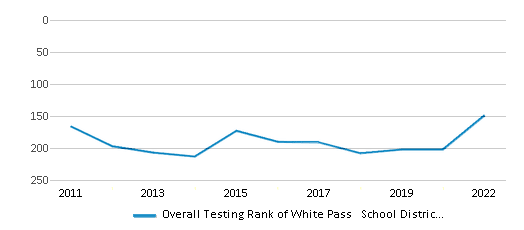
Math Test Scores (% Proficient)
35-39%
40%
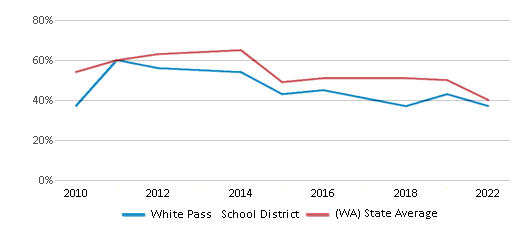
Reading/Language Arts Test Scores (% Proficient)
45-49%
53%
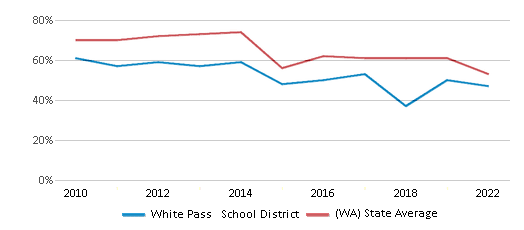
Science Test Scores (% Proficient)
40-44%
49%
Graduation Rate
60-79%
84%
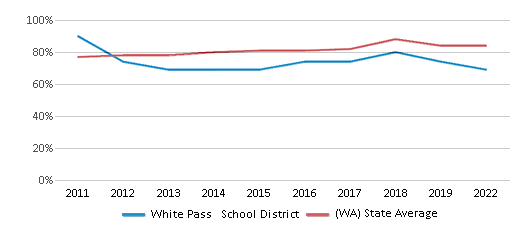
Students by Ethnicity:
Diversity Score
0.31
0.68
# American Indian Students
n/a
5,703 Students
% American Indian Students
n/a
2%
# Asian Students
2 Students
23,666 Students
% Asian Students
1%
8%
# Hispanic Students
36 Students
73,370 Students
% Hispanic Students
10%
25%
# Black Students
n/a
13,426 Students
% Black Students
n/a
5%
# White Students
307 Students
148,736 Students
% White Students
82%
50%
# Hawaiian Students
n/a
3,970 Students
% Hawaiian Students
n/a
1%
# Two or more races Students
27 Students
26,275 Students
% of Two or more races Students
7%
9%
Students by Grade:
# Students in PK Grade:
32
1,563
# Students in K Grade:
26
3,945
# Students in 1st Grade:
27
4,184
# Students in 2nd Grade:
31
4,295
# Students in 3rd Grade:
25
4,473
# Students in 4th Grade:
29
4,820
# Students in 5th Grade:
30
7,072
# Students in 6th Grade:
29
71,936
# Students in 7th Grade:
26
81,343
# Students in 8th Grade:
19
82,029
# Students in 9th Grade:
26
11,117
# Students in 10th Grade:
27
8,145
# Students in 11th Grade:
22
8,299
# Students in 12th Grade:
23
9,339
# Ungraded Students:
-
-
District Revenue and Spending
The revenue/student of $23,750 is higher than the state median of $18,796. The school district revenue/student has declined by 5% over four school years.
The school district's spending/student of $20,718 is higher than the state median of $19,246. The school district spending/student has declined by 5% over four school years.
Total Revenue
$9 MM
$20,715 MM
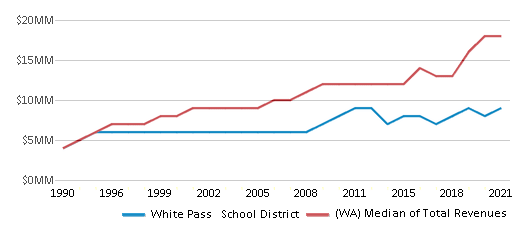
Spending
$8 MM
$21,212 MM
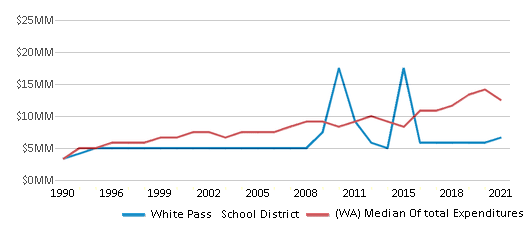
Revenue / Student
$23,750
$18,796
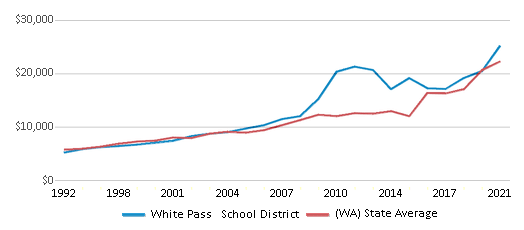
Spending / Student
$20,718
$19,246
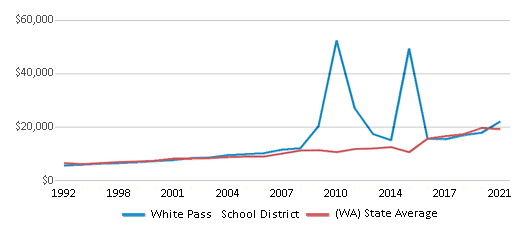
Best White Pass School District Public Middle Schools (2025)
School
(Math and Reading Proficiency)
(Math and Reading Proficiency)
Location
Grades
Students
Rank: #11.
White Pass Jr. Sr. High School
(Math: 30-34% | Reading: 55-59%)
Rank:
Rank:
6/
Top 50%10
516 Silverbrook Road
Randle, WA 98377
(360) 497-5816
Randle, WA 98377
(360) 497-5816
Grades: 7-12
| 143 students
Recent Articles

Year-Round Or Traditional Schedule?
Which is more appropriate for your child? A year-round attendance schedule or traditional schedule? We look at the pros and cons.

Why You Should Encourage Your Child to Join a Sports Team
Participating in team sports has a great many benefits for children, there is no doubt. In this article you will learn what those benefits are.

White Students are Now the Minority in U.S. Public Schools
Increasing birth rates among immigrant families from Asia and Central and South America, combined with lower birth rates among white families, means that for the first time in history, public school students in the United States are majority-minority. This shift in demographics poses difficulties for schools as they work to accommodate children of varying language abilities and socio-economic backgrounds.





